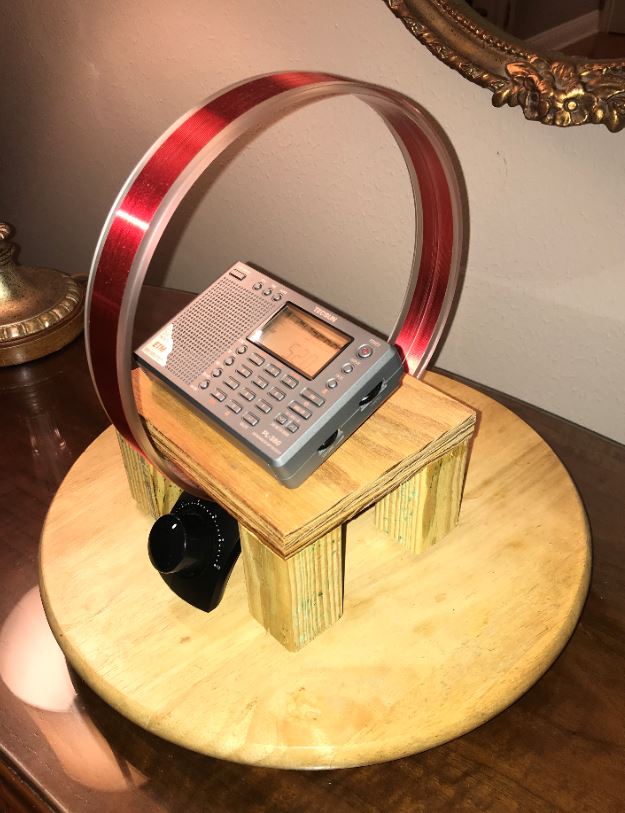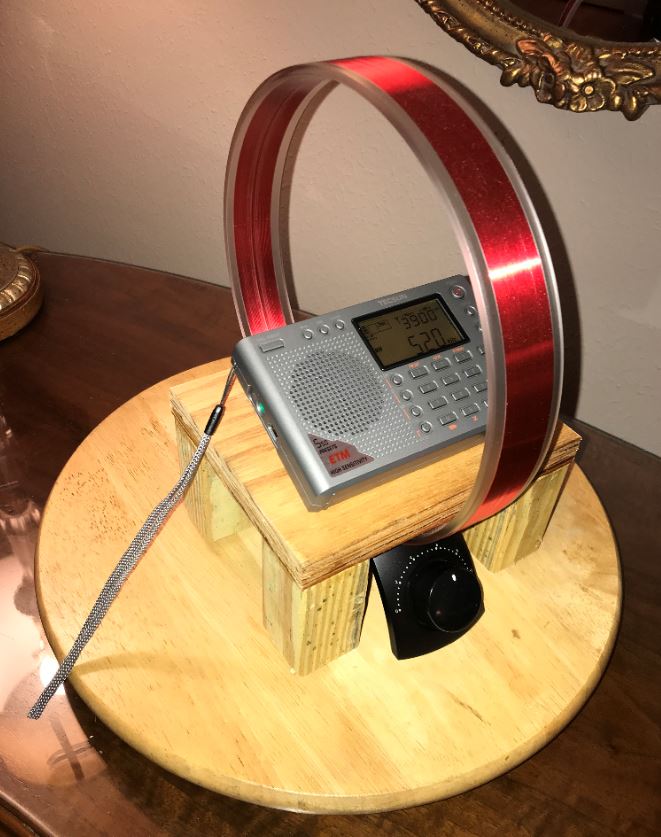Many thanks to SWLing Post contributor, Jack Blanke (WB5LVP), who writes:
I stole this idea from another SWLing Post contributor and I hope he won’t mind.
However, placing the Ferrite Antenna near the center of the loop does enhance its performance and the Lazy Susan was something I had been using long ago to quickly re-orient the radio azmuth to accommodate the signal source. But, like my mentor, minor improvements like this can really enhance performance of smaller portables on medium wave. He used cardboard and I used scrap wood from the work shop. Either way, not much money was involved in this minor enhancement.
These inexpensive additions to the listening post really make the PL380 and the AN200 combo provide hours of enjoyment from medium wave DXing. Now,if only I can find the gent’s name who came up with this little gizmo, I’d love to thank him!!
73’s!
Thanks for sharing your setup, Jack! I can assure you that Rich Stahl (WR3V) will be happy you “stole” his idea. That’s what it’s all about–helping each other! I love the little table/stand you built for the portable and how it perfectly accommodates the loop. Great job!
Do you enjoy the SWLing Post?
Please consider supporting us via Patreon or our Coffee Fund!
Your support makes articles like this one possible. Thank you!




The Tecsun and Terk loops for medium wave are a quick and effective way to augment the reception of small radios with built-in ferrite bar antennas. With some attention to the geometry of the coil and the optimization of the inductance/capacitance radio it’s not too hard to improve on the sensitivity of these antennas. However, if you live in an area where there is a high density of medium wave stations, sensitivity is not the problem, and these antennas are quite adequate. There are a few things to keep in mind.
1. Using these external loops does not disable the internal ferrite loop. It is still fully capable of reacting to the electromagnetic field around it. Nulls will only occur when the field from the external loop is equal to and completely out of phase with the internal loop produces by itself. Consequently, the direction the external loop is pointed to produce a null may be slightly different from that of the radio itself, and not too much confidence should be place in it. The point where the field from the external loop begins to overcome the field of the internal loop is where the external loop will be more effective.
2. For some radios, centering the loop over the receiver, i.e., midpoint of the ferrite bar may not be the point of maximum coupling. I have found some arrangements work best with the external loop a few inches away from the radio with the axes of both coils coaxial with one another.
3. Lateral orientation of the loop may not produce a complete null. Sometimes the direction of the incoming signal has a vertical component, in which case the loop must be tilted vertically.
Yep, this is a great idea, gives you excellent rotational control. I’ve also got an AN-200 and works great. Now all you need is an outer compass bezel, similar to those that were used in RDF’s and you can keep track of the compass heading for your favorite stations. By the way, you don’t necessarily need the radio inside the loop, just near it.
Happy to see all these great ideas.
It’s a common mistake buying the AN-200 with the convex base because it looks more fashioned and then realizing that the AN-100 with the concave base allows to keep the radio standing in the middle without having to make a shelf.
Furthermore the AN-100 with the concave base allows to open and inspection inside the base an make some modifications if needed.
“Furthermore the AN-100 with the concave base allows to open and inspection inside the base and make some modifications if needed.”
Exactly…it’s easy to install a SPDT switch with a fixed cap across the tuning cap to get
630 meter coverage with the AN-100,down to 400 khz…it works well.